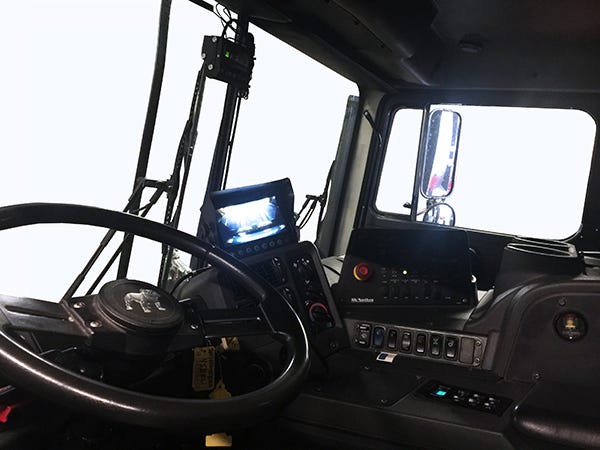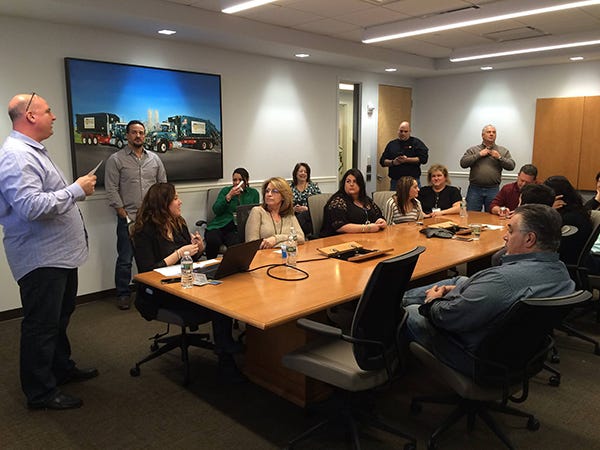How Action Environmental Group is Using Cams to Reduce Risky Behavior
New Jersey-based waste and recycling company Action Environmental Group is stepping up its company-wide safety efforts by growing its internal safety team and utilizing smart safety tools like third-eye cameras and digital training.
“We have been using third-eye cameras for the past year, and the cameras serve two main purposes: to provide day-to-day training and analysis and to learn from individual instances,” says Action Environmental Group’s Director of Safety Ken Levine.
The cameras record both the driver and the road ahead, which provides Action with a new and innovative way to coach, encourage and train employees about safety. The recorded videos are then sent over to a third party to analyze for infractions, such as a driver not wearing a seatbelt.
“The videos with infractions are sent back over to us to review and coach employees on the proper safety procedures,” says Levine. “We take them through real-life circumstances so that they can fully understand why our safety methods are important.”

The cameras also provide other safety and management benefits, such as route optimization, service verification, risky behavior reduction and crash documentation, which helps eliminate false or fraudulent claims of damage.
“In the first three months of deployment, I have personally seen a 30 to 50 percent reduction in risky behavior,” says Levine. “And in some cases, we have even seen the system play a serious role in workers’ compensation claim investigations.”
Currently, 20 percent of Action’s fleet has third-eye cameras, and the company plans to add 25 units a year for the next three to four years until its entire New York fleet is equipped. “Any new purchased truck is also coming with a third-eye camera already set up inside it,” says Sal Mastriani, Action Environmental Group’s director of risk management.
In addition to adding third-eye cameras to trucks, Action has partnered with online safety training company Vertical Alliance Group, Inc. (VAG) to produce Learning Management System (LMS), which is a web-based safety training program for employees. VAG produces safety and compliance videos related to the trucking industry, and Action uses those videos to educate employees on proper safety procedures.
“When incidents happen, we can send out a note to site managers so that they can provide the employee who had the incident with access to the digital training and test component,” says Levine. “The test lets us know that the employee understands what went wrong and what they can do in the future to prevent these incidents.”
In the past, Action was relying on YouTube videos or old internal videos for training purposes. This new partnership provides Action employees with proper and precise training videos specifically related to the waste and recycling industry. VAG will also add the videos to its digital library so all of the videos are easily accessible in one location.
Since implementing these smart safety tools, Action has seen a decrease in both the severity of incidents and the amount of employee injuries. The company also hasn’t had any fatalities, which is its number one goal.
Besides adding smart safety tools into its overall safety plan, Action is also working closely with employees to make sure that everyone is involved in the company’s safety efforts and goals.
In 2008, Action’s safety team began with one person, and it has since grown to 10 people. “The safety team is comprised of people who are doing the actual safety portion of the efforts, but every company member, dispatcher, supervisor, operations manager, etc., at each location is actually part of the overall safety team,” says Mastriani.

Action has two safety meetings a week: one with the company’s risk group to discuss overall safety issues and one with Sal’s team to review the previous week’s incidents, which may include accidents or injuries. The weekly meetings provide a place for employees to discuss what they could have done differently and what precautions they can take to avoid incidents in the future.
“We also have a monthly safety meeting for each of our depots,” says Mastriani. “In these meetings, we discuss both safety and OSHA-related topics. Every person in our company attends these meetings so unless an employee is out sick or on vacation, they will attend at least one safety meeting a month.”
Action is also part of the National Waste & Recycling Association safety committee, which meets about three times a year to discuss safety ideas.
“We are considered a large regional company here, but to the Waste Managements and the Republics we are a small company,” says Levine. “Our ownership has stated that we need to be as safe as the Waste Managements of the world and with that in mind, we serve on the NWRA safety committee to get input for the smaller guys.”
Inspired by NWRA’s annual safety meetings, Action is currently working on putting together its own safety committee with some other companies in New York. The committee would meet to go over industry safety ideas, solutions and concerns.
“We feel that it will be beneficial to not just us as a company, but for the whole industry that handles the metropolitan area,” states Mastriani.
About the Author
You May Also Like




